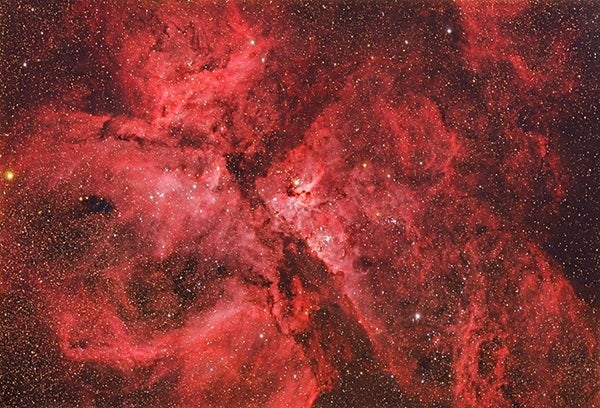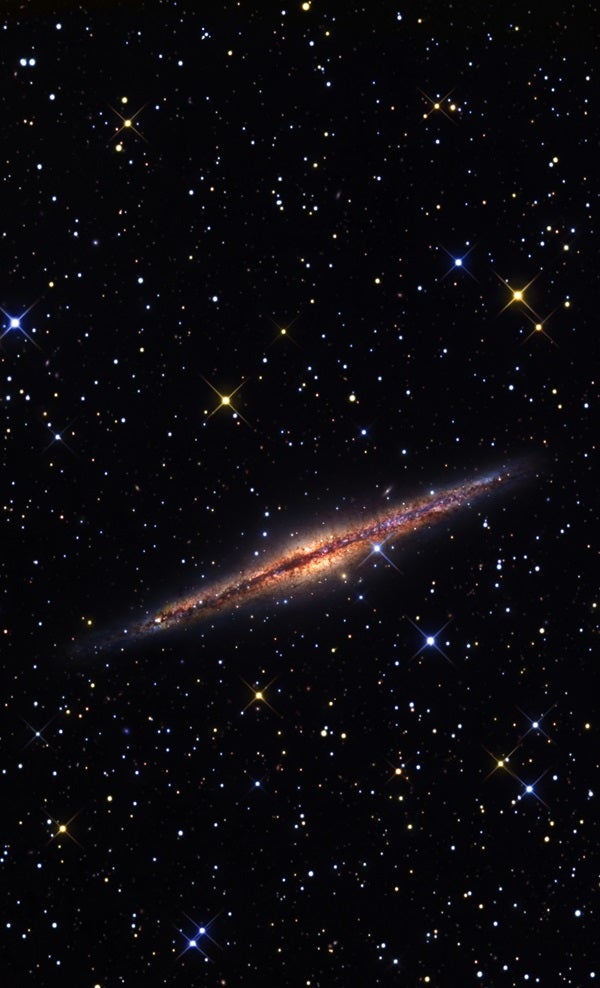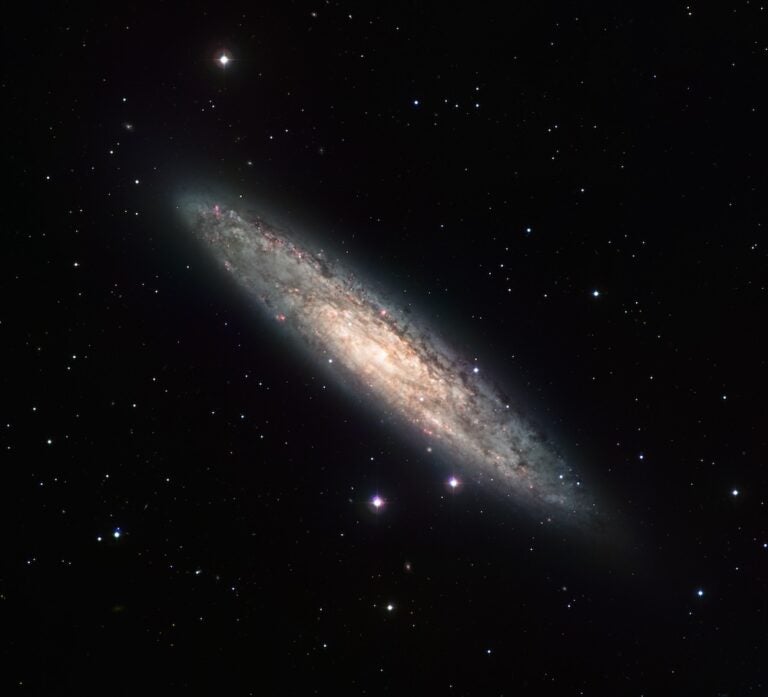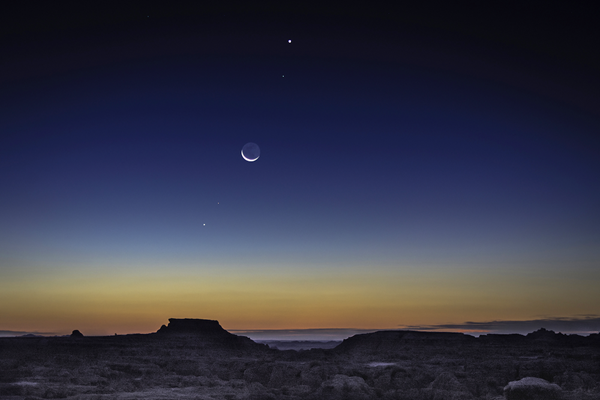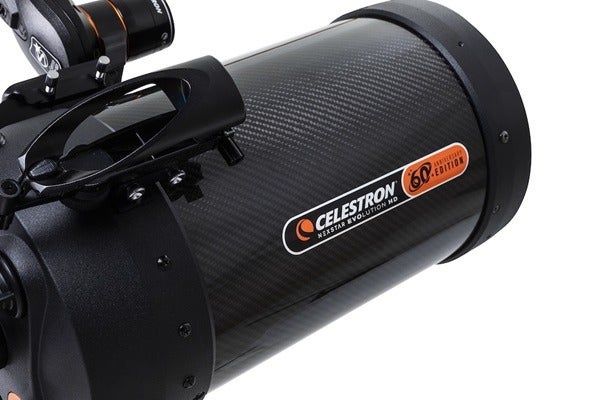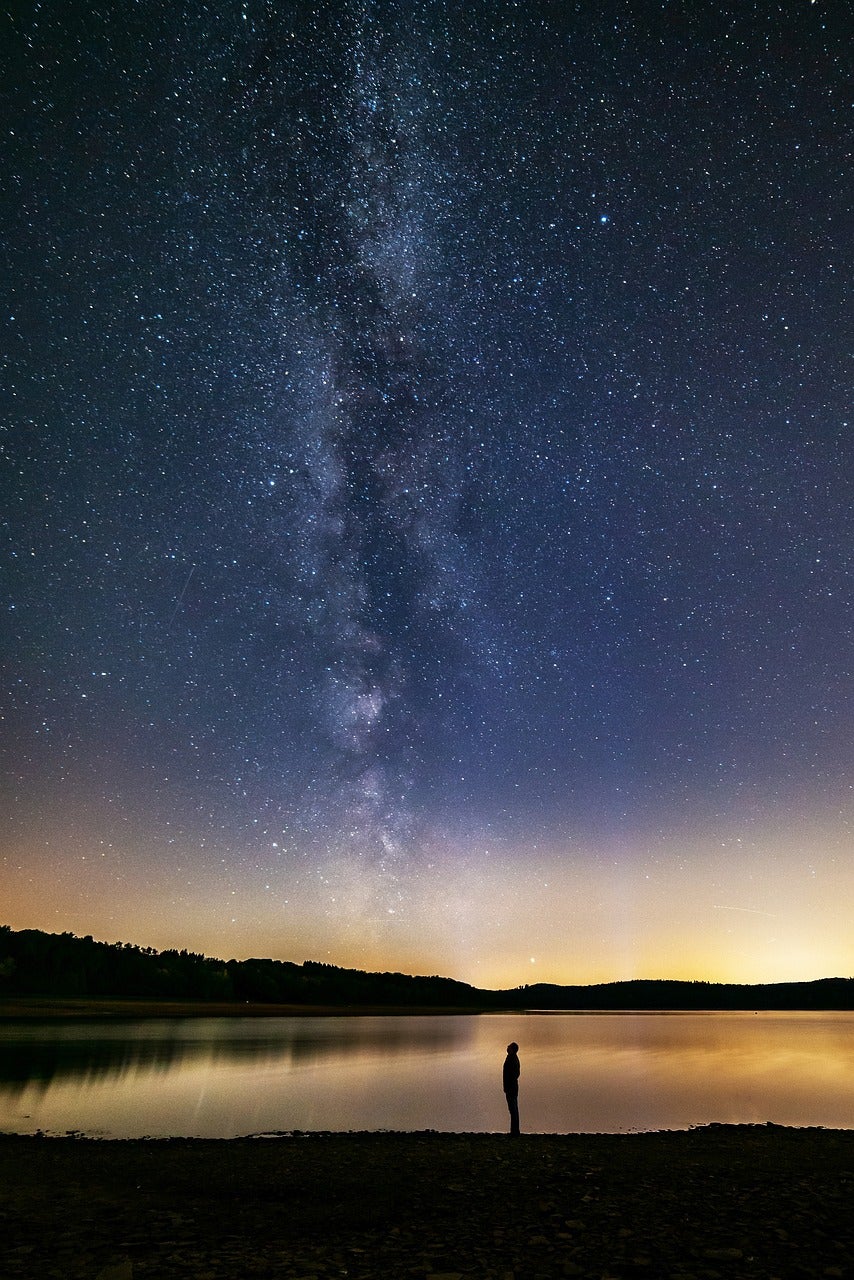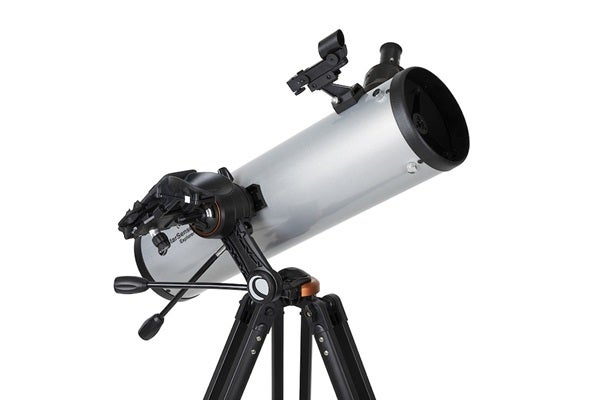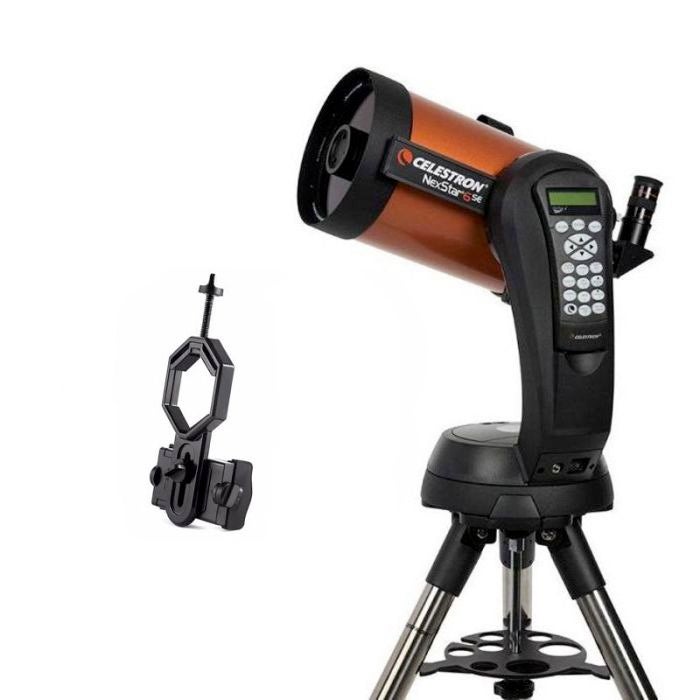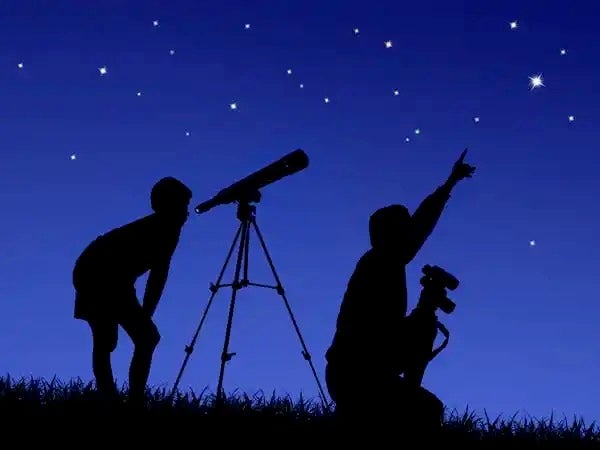Nebulae: Filters really help
Use the biggest telescope you can when observing nebulae (clouds of dust and gas). The light throughput of larger scopes allows you to use filters, which pass certain wavelengths of light, but block the rest. When used with small scopes, filters cut out too much light.
Filters labeled “Deep-sky,” “LPR” (light pollution reduction), and “UHC” (ultra-high contrast) improve your view of emission nebulae. Don’t use a filter on reflection nebulae because you’ll only dim the object. Those objects simply reflect and scatter starlight, which comprises all wavelengths.
Dark nebulae are clouds of dust grains and cold gas obscuring light from stars or nebulae behind them. Don’t use filters when you observe dark nebulae because you’ll want the full effect from the light behind them.
A planetary nebula forms when a Sun-like star ejects its outer layers near the end of its life as an expanding shell of cool, thin gas. Filters labeled “OIII” work best for planetary nebulae.
The dominant color of planetaries lies close to the border between what we see as green and blue. So, even slight differences in a person’s color response could cause two observers to see different colors in the same object.
Star clusters: Look closely for patterns
A star cluster is a group of stars held together by gravity. The two main types are open clusters and globular clusters.
Open clusters are large, so start with low-power eyepieces. Discern which stars belong to the cluster and which simply lie in the field of view. This can be tricky when the cluster lies against the Milky Way. Big telescopes sometimes hinder the identification of cluster stars, because they reveal so many background stars.
No group of objects excites new observers more than globular clusters. You can spot the 20 brightest even from light-polluted locations. From a dark site, globulars explode with detail. Use high magnification, and watch fuzz resolve into points of light that form intricate patterns.
Look for streamers extending out from the nucleus (the cluster’s center). Observe the cluster’s concentration, its richness, and the range of star brightnesses.
Galaxies: Head to a dark site
Galaxies may be the most intriguing class of objects, but, except for a few exceptions, they appear small and faint. Plan your sessions so you’re observing each of these elusive objects when it sits highest in the sky and you’re seeing it through the least amount of atmosphere.
Begin by noting the galaxy’s shape. Look for a central condensation or other bright areas. How does the galaxy, or its nucleus, compare with the field stars? Experience at the eyepiece is most important for galaxies. What looks like a blob to beginning observers eventually will reveal a wealth of details, albeit faint.
Galaxies contain all types of objects, so any filter will dim your view. As with all deep-sky wonders, observe galaxies from the darkest possible location. A 6-inch telescope under a dark sky will beat a 12-inch instrument in a light-polluted area every time.

